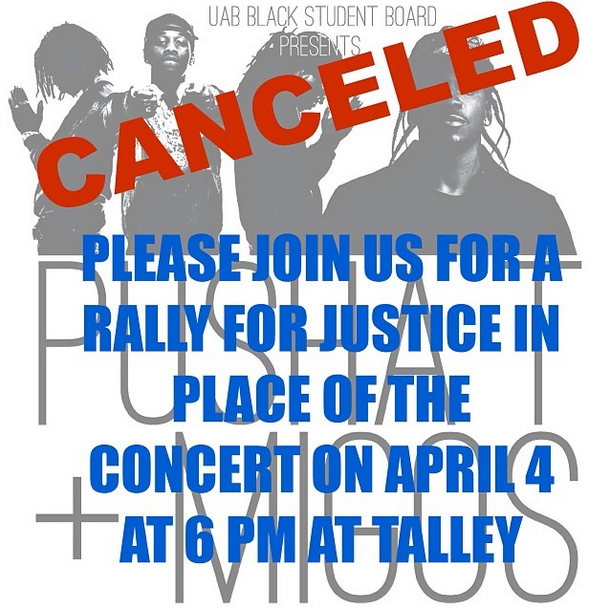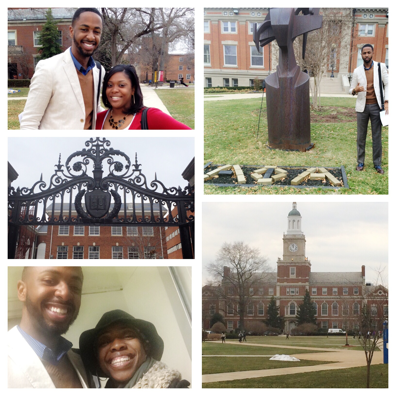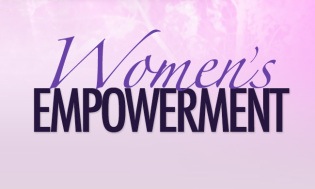myHIN Blog
Category: Stigma Articles

May 21, 2014
Where are the black doctors?
 Recent studies have revealed that 5 percent of physicians and dentists in the United States are black. With a statistic like that, how does one find the courage and motivation to work towards a profession where they see no one like themselves? As I continue my journey in applying to medical school this summer, I find myself trying to beat this statistic and become the example. Hopefully a general surgeon that will one day be able to share her personal stories, and most importantly, my struggles, so that future black medical school candidates can see examples of successful black physicians who likely had similar backgrounds, experiences and struggles as they do. With that said, I think its important to start this process early. If you introduce the possibility and the representation of black physicians at a young age, I believe that more black students would embrace the idea of becoming a physician. In addition to that, black students would view Medical and Dental School as an option and not a dream. It’s time to change the statistic and move above it. We can no longer let the challenges and academic curriculum for preparing and applying to health professional schools hinder our ability as black students to perform and show that we too belong in these professions. Though sometimes things may get difficult, there will always be resources available to help guide and encourage us. The need for more black doctors should be taken more seriously. The shortage in black physicians can potentially make access to healthcare even more challenging for minorities. Thus, affecting minorities’ access to healthcare and proper treatment. So, the question no longer needs to be, “Where are the Black Doctors” but rather “Who are all these black doctors”. Though this is not something that can be changed over night, it can be changed in the future. As long as the seeds are planted, the tree will grow. Black physicians need to work together to help inspire future black doctors.
Recent studies have revealed that 5 percent of physicians and dentists in the United States are black. With a statistic like that, how does one find the courage and motivation to work towards a profession where they see no one like themselves? As I continue my journey in applying to medical school this summer, I find myself trying to beat this statistic and become the example. Hopefully a general surgeon that will one day be able to share her personal stories, and most importantly, my struggles, so that future black medical school candidates can see examples of successful black physicians who likely had similar backgrounds, experiences and struggles as they do. With that said, I think its important to start this process early. If you introduce the possibility and the representation of black physicians at a young age, I believe that more black students would embrace the idea of becoming a physician. In addition to that, black students would view Medical and Dental School as an option and not a dream. It’s time to change the statistic and move above it. We can no longer let the challenges and academic curriculum for preparing and applying to health professional schools hinder our ability as black students to perform and show that we too belong in these professions. Though sometimes things may get difficult, there will always be resources available to help guide and encourage us. The need for more black doctors should be taken more seriously. The shortage in black physicians can potentially make access to healthcare even more challenging for minorities. Thus, affecting minorities’ access to healthcare and proper treatment. So, the question no longer needs to be, “Where are the Black Doctors” but rather “Who are all these black doctors”. Though this is not something that can be changed over night, it can be changed in the future. As long as the seeds are planted, the tree will grow. Black physicians need to work together to help inspire future black doctors.
Share

May 12, 2014
Much More Than Just a Cancelled Concert
So our university had the opportunity to host one of the greatest concerts of the current music age. The new rebellious hype of Migos accompanied by the classic hard rhymes of Pusha T had the potential to be the greatest concert of ones undergraduate career. This potentially great concert ended before it even began. Two days before the scheduled date of the concert I found out via twitter that the concert that we’ve been so anxious about had been cancelled.
I personally, like many of my colleagues, was looking forward to this concert. This concert was supposed to help me get through the week. As soon as I found out that it was cancelled my mood completely changed. I had my stress reliever for the month taken from me. Stress is real, and when a stress reliever is taken away what do you have left; STRESS.
But this is much more than just a cancelled concert. We as the African American community on campus have had the repeated issue that our voices aren’t truly being heard. Even if we are “heard” our ideals are effortlessly tossed away as trivial or even not relevant to a “bigger” issue. For example there was a historic low of African American students that got accepted by NC State this past fall semester. A total of 215 African American freshmen were accepted to State last semester; yup only 215 out of a school of 35,000.
I know one of the biggest fears coming to state is that I would become white. Straight up, I thought I would be white washed by the very PWI I chose to get an education. I came to African American visitation day before it was renamed “Embrace NC State” and I perspective changed completely. Seeing people “like me” is important, not the most important, to my social skills, my culture, and the quality of my education.
Aside from my disappointment I had to find another way to relive this accumulated stress. I ended up hanging out with friends and just talking about the entire issue. Stress is real and we all need a healthy way to deal with it.

Share

April 08, 2014
Visit to Howard University
Graduation is quickly approaching and it’s time to decide what I’m going to do after I leave NC State. Graduate school is definitely my next move. Since Dr. Payton is truly invested in the future of her students, she scheduled a day where my friend Keiara and I could visit Howard University. Located in Washington DC, Howard is an extremely prestigious HBCU- which stands for historically black colleges and universities. The university currently ranks third in the nation for HBCUs to attend in the US. After being informed about this trip, I became excited to experience what a day at an HBCU feels like.
Upon arrival at Howard University, we were greeted by Dr. Morgan. She was very welcoming and definitely made me feel like family. One thing I can say that Dr. Morgan and Dr. Payton are both women of structure. They had an itinerary set up for Keiara and I to follow during our visit. The first item on the list involved speaking to someone who worked in admissions for the School of Business. The woman who we spoke with was very informative and provided much insight on the different programs within the Business School. She also expounded upon Howard’s efforts in partnering with universities globally to encourage students to study abroad. I studied abroad the summer of my freshmen year at NC State and it was one of the best experiences in my life. I would definitely enjoy traveling again to study in another country while pursing my master’s degree. After the information session, we attended a “Wall Street on Campus” session. Though I got a little lost during the presentation, it was great to hear a company representative speak on various aspects of corporate business. At the completion of the presentation, we went on a self-guided tour of campus. While on the tour, I met some of my fraternity brothers from the Beta Chapter of Alpha Phi Alpha Fraternity, Incorporated. It was also neat to see all of the fraternity and sorority plots in the center of campus. “The Quad” also called “The Yard” is Howard’s focal point and the center of campus life. This is similar to “The Brickyard” that we have at NC State. While on the tour, I met up with one of my friends who currently attends Howard. She showed us inside the fine arts department and took us into the art gallery, which really intrigued Dr Payton.
After we departed, we had lunch then got a chance to tour the Divinity School. The Divinity School is located about ten minutes away from main campus. Once we arrived there, we were welcomed by Ms. McDaniel. Alongside her were two current Master’s of Divinity students and one happened to be my fraternity brother. Both students gave Keiara and I a personalized tour of the facility and answered any questions we had. This was by far my favorite portion of the day because I’m seeking to obtain my Masters of Divinity once I graduate from undergrad. Right before we headed back to the airport, I was able to introduce myself to Dr. Pollard, III. He had a very genuine spirit and was knowledgeable about my home church that I grew up in as a child.
It truly means a lot when a professor invests their personal time into the lives of their students. Dr. Payton did just that for Keiara and I. I can’t thank her enough for the exposure and for the experience at Howard University. I will be submitting my application there for Divinity School. Who knows- I may be the one providing tours to prospective students in the future.

Follow @myhealthimpact on Twitter and myhealthimpact on Tumblr!
Share

March 20, 2014
College-Age Generation and the Affordable Care Act (ObamaCare)
In February 2014, @myhealthimpact and @medicalmentors held a Twitter chat (#MedTechImpact) to discuss the importance of the Affordable Care Act (#ACA)for the college-aged population. The chat included experts from the Congressional Black Caucus Foundation, Howard University, Booz Allen Hamilton and the Maryland County Department of Health and Human Services.

Topics included: common misconceptions about the Affordable Care Act; finding #ACA online information; why should college students and the college-age population have health care coverage; advantages and disadvantages of the Act. We also discussed how the Act encourages workforce development diversity among medical and health providers as well as information and computing technologists.
The infographic below can be found on the myhealthimpactnetwork.org site and/or here directly and lists some key facts regarding the #ACA. The word cloud shows the keywords from the chat including students, health, college, join, patient and tech. As discussed during the Twitter chat and shown in the infographic, the #ACA will:
- Enable young people to stay on their parents’ health insurance until age 26.
- Provide coverage for preventive care.
- Provide preventive care and screenings for #HIV, #depression, #diabetes and many others.
- Provide care even for those with pre-existing conditions.
The final day to register for health coverage is March 31, 2014. #GetCovered. Check out the details for yourself. Inform. Educate and empower yourself. See https://www.healthcare.gov/young-adults/

Share

March 09, 2014
Expectations for Women’s Empowerment
The name “Women’s Empowerment” alone implies that the event will consist of mainly women who aspire to be empowered by some sort. There are some men, including myself, who I’m sure will be attending and also would benefit from this experience. As the date gets closer, the anticipation draws near of what to expect at this well-known event.
Tyler Perry, an American director, screenwriter and actor is scheduled to be the keynote speaker for Women’s Empowerment. I am looking forward to hearing his words of wisdom and learning more about his personal success story. Due to the fact that I enjoy gospel music, I’m excited to hear artists such as Jessica Reedy, Byron Cage and the legendary Pastor John P Kee. Along with the numerous seminars and workshops that are scheduled to take place, I’m ready to see how the fashion show will turn out. I have a friend who will be modeling in the show so it will definitely be great seeing him walk on the runway.
One of the concerns I have is being a male attending an event that is geared towards empowering women. Women’s Empowerment was established in commemoration of Women’s History Month. Therefore, the goal is to accentuate the lives of African American women by touching on issues that affect them holistically as women. I hope not to seem “out of place” amongst thousands of women as I’m sure that I will stand out. The fact that thousands of African American women will be unified together in positive light will be a wonderful sight to see. Overall, I’m greatly anticipating all of the things Women’s Empowerment has to offer. As I mentioned earlier, I’m sure that I will be able to benefit from this event, even as a male.

Share

March 09, 2014
Initial Thoughts: Women’s Empowerment 2014
When I hear the word empowerment, I automatically think uplifting. I feel like I can accomplish absolutely anything. To add the word women beside empowerment, I think of black women…women in general feeling like we are on top of the world. I believe that in many areas and arenas, women are overlooked and cast down to being inferior to our male counterparts. Women are strong, hardworking, the wife, the mother, the sister, the friend, the businesswoman, the doctor, the lawyer; the person wearing many hats.
I’m looking forward to sitting in the PNC Arena with thousands of women that wear these many hats that have the desire to be encouraged so that they can walk out into the world and do great things. I’m excited to hear the keynote speaker, Tyler Perry, hearing musical guests such as Chrisette Michele and just being in the number.
I’m hoping for Women’s Empowerment to live up to every aspect of its name. I would like to see Women’s Empowerment uplift, be a motivator to those needing motivation and refreshing to those that need to be reminded that they can be greater than just great.

Share

March 06, 2014
Are Sexual Transmitted Diseases (STD’s) still a taboo subject?
Sexually Transmitted Diseases, STDs, have become a topic of discussion that many people feel uncomfortable talking about and try not to think about them, hoping they will go away. As of now there are more than 25 diseases that are transmitted sexually. The organisms, which can cause these diseases usually, enter the body through mucous membranes—such as the surfaces of the vagina, urethra, anus, and mouth.
Listing of Common STDs
How are Sexual Transmitted Diseases (STDs) Caught?
Sexually transmitted diseases can be caught through intimate contact with someone who is infected, especially during oral, anal, or vaginal sex. However, some infections are also transmitted nonsexually. Sexually active college-age men and women are at the highest risk for contracting STDs. With that said, it is important for college students to use protection and get tested regularly.
Symptoms of STDs can be unnoticeable and can lead to more issues if not treated. As adults, it is our responsibility to stay educated on the topic of STDs and continue to utilize health institutions for help and guidance.
If that isn’t enough motivation for you, below are some examples of STDs and images of their effects. I hope this information gives you the courage to help spread the awareness of this issue and practice safe sex, as well as, getting tested.
Pictures of Common STDs




Share

March 04, 2014
Recline Vs. “Leaning In” Meaning for STEM Education & Careers?
What: Twitter Chat Moderator for Big Beacon #bigbeacon
When: March 5, 2014 at 8pm EST
Where: Follow us on Twitter @myhealthimpact and Dr. Payton's personal Twitter account @drfayonline.
See myhealthimpactnetwork.org on the web and follow on Twitter @myhealthimpact. Follow Dr. Payton at her personal Twitter account @drfayonline.

Facebook Chief Operating Officer, Sheryl Sandberg, has offered one perspective to address question of inclusive of women in the workplace. Her book, Lean In: Women, Work and the Will to Lead, speaks to family life and work balance. I am still unsure about the term “balance”. Rather, I see the notion as one of “integration” informed and/or influenced by intersectional dimensions of race, gender, class, first-generation, sexual orientation, etc. Yet, Lean In, also speaks to the need for women to take charge of their careers and push forward despite the “isms” that can and do exist. If you need a brief summary of the book, see this Lean In blogspot.
Many have found Sandberg’s call as placing the burden of change on women, speaking to the privileged and failure to recognize the nuisances’ women of color in the discourse. As Rosa Brooks of The Washington Post stated in her February 25, 2014 article, Sandberg connects to those with the resources to navigate, as she says, “all this Leaning In”. Brooks suggests that women should “recline” instead.
In STEM, I am interested to learn how can Lean In impact the education and career trajectories of those doing the leaning. If the text is indeed focused on women, what are the roles of men in the workplace, both academic and industry? This Twitter Chat links to the Big Beacon Manifesto: “The whole new engineer is authentically connected to with others”. Further, the manifesto encourages engineering education to embrace young people as whole-bodied and whole-brained individuals. The status quo will not go easily, but go it must.”
Questions to consider for the Twitter Chat that makes for an interesting discussion:
- How do you view the “Lean In” concept?
- How have you encouraged underrepresented and female students to “Lean In”?
- How is STEM different that other fields, and how can this impact STEM educational leadership views of those who “Lean In”?
- What biases (if any) result when women and underrepresented minorities “Lean In”?
- What are the potential penalties and rewards of leaning in for women, women of color and underrepresented groups?
- How can STEM education and the workplace better foster a “Lean In” approach?
- How can this concept be use to foster and support STEM leadership roles among women and underrepresented groups?
- What are your thoughts on “reclining”?
Share

February 27, 2014
Condoms Don’t Protect From Everything
Some people think they know everything there is to know about sexually transmitted diseases. The possibility of catching gonorrhea, syphilis, or even HIV is a scary thought- but some have that perception that they won’t catch anything. Maybe you wear condoms during sexual intercourse so you think that you’re good and have nothing to worry about, right? Well, I must inform you that condoms don’t protect from everything. Even some of the most elite individuals in society are walking around with sexually transmitted diseases. Yes- this is not a joke.
Did You Know Condoms Have a Fail Rate?
Statistics show that condoms have an annual 11% fail rate. Not so safe as you imagined after all… Even when condoms are used, they do not fully protect from sexually transmitted diseases that are passed by skin-to-skin contact. Just this statement alone opens the door for many diseases to walk in and take residence in your body if you are not careful.
Here are some tips you can use in order to lower your risk of catching an STD:
1. Get Tested. Use STD Testing to Know Your Status!
This may sound like an obvious answer but there are still so many people who do not know their std status. I will admit that you fear what you do not know. Having a close friend to go get tested with you can help eliminate that fear you have. That “what if” question will continue to linger until you make the decision to know you status for yourself. We have a specific area on the myHealthImpact website where you can type in your zip code and you will be informed of testing locations that are close to you.
2: Know the Safe Sex Facts For Yourself
There are so many resources available that will provide information on safe sex and sexually transmitted diseases. Saying that you were not informed anymore can no longer be an excuse. Sometimes you have to take the initiative to seek out information for yourself. Ultimately, how can you inform someone about STDs if you don’t know about them yourself?
3. Abstinence.
This is something that the younger generation doesn’t hear a lot about anymore. The media is constantly portraying sex in advertisements, song lyrics and online which makes it seem acceptable. Remaining abstinent until marriage is the only way you will be able to know your status for sure. You don’t run the risk of catching a sexually transmitted disease or early parenthood. This may seem challenging but it is possible. Make a promise to yourself that you will honor and protect your body. Anytime you find yourself being tempted, remember that promise you made to yourself. It will be worth the wait for that special someone.

These diseases are REAL people. While all sexually transmitted diseases don’t lead to death, some of them do. Whether you continue to have sex before marriage or wait until marriage is totally up to you. Whatever you decide, I encourage you to be safe. While condoms do protect from some STDs, they don’t protect from everything. Just keep that in mind.
Share

February 16, 2014
Smart Condoms: Could These Be The Best Condoms Created to Date?
As we all know condoms do not prevent all sexual transmitted diseases (STDs) and sexual transmitted infections (STIs) during sex. Well why not build a better condom. Last November the Bill and Melinda Gates foundation received over 812 entries for the “Build-a-better-condom” competition. A reported 11 entries received a grant of $100,000 to produce their condoms and hopefully bridge the gap for condom innovation. This is where tech meets health.
Talk about a smart condoms. Some of these entries range from polymer based composite materials to biologically engineering material for a “significant enhancement for male pleasure.” These “next-gen” condoms may be what consumers are looking for when taking safe sex more seriously.
Developer Lakshminarayanan Ragupathy from Trivandrum, India, has an entry named “The warm embrace”, which incorporates composites for high heat transfer, but also drugs that would enhance safety. Not only is his design super thin and strong, it’s also very flexible.
Now here’s a question, how much would you pay for a condom that you couldn’t feel and worked 99.99% of the time?
Follow us at tumblr.myhealthimpactnetwork.org (Tumblr)
Follow us on twitter: @myhealthimpact
Share
Page 4 of 5 pages ‹ First < 2 3 4 5 >
In Partnership with: Poole College of Management, College of Humanities and Social Sciences, National Science Foundation, Penn State
Take Action, Get Tested: Find Your Local Testing Center Why Get Tested?

